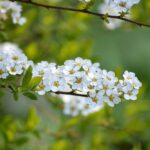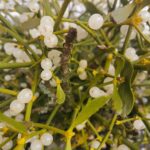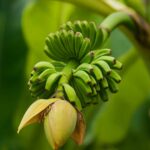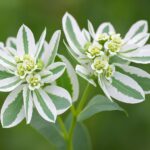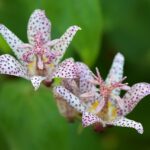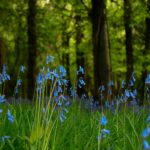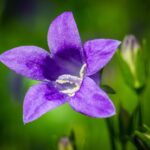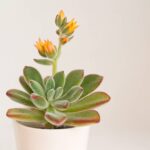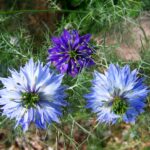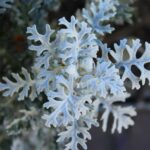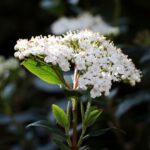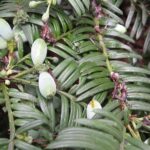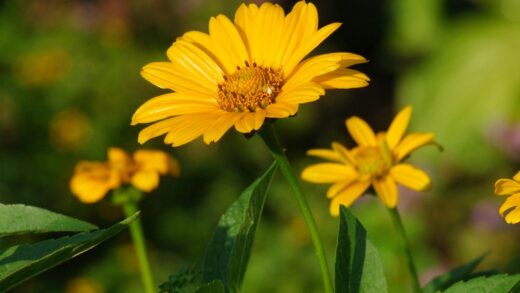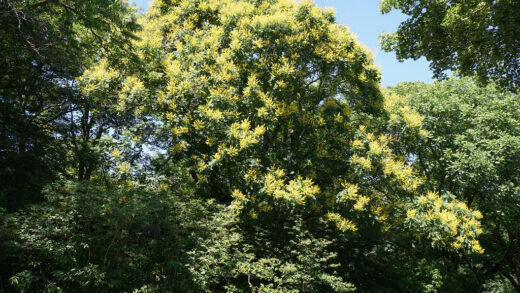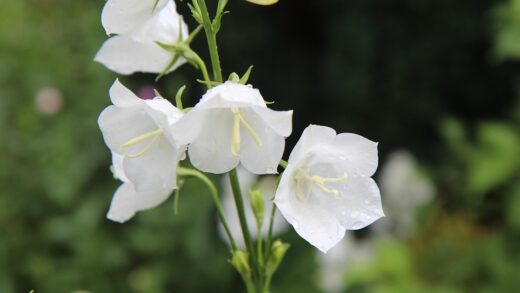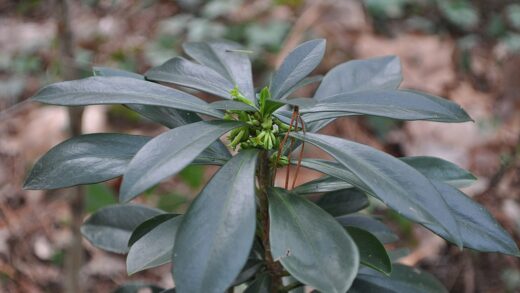The Kousa dogwood, known scientifically as Cornus kousa, is a captivating ornamental shrub or small tree native to East Asia, admired in gardens for its late spring to early summer blooms and edible, raspberry-like fruit. Although its care is generally not considered overly complex, the key to the plant’s optimal growth and abundant flowering lies in understanding and meeting its specific soil and nutrient requirements. Proper nutrient management not only serves its spectacular appearance but also contributes to increasing the plant’s resistance to diseases and pests. The foundation of this is providing conditions similar to its natural habitat, especially acidic, organically rich, and well-drained soil, which is often more important than excessive, artificial fertilization.
One of the most critical conditions for the healthy development of the Kousa dogwood is the soil’s chemical balance, its pH value. This plant species prefers distinctly acidic to slightly acidic soils, ideally with a pH value between 5.5 and 6.5. If the soil is too alkaline (above pH 7.0), the plant cannot absorb essential nutrients, even if they are present in the soil. The most common and spectacular symptom of this is iron chlorosis, which manifests as yellowing of the leaves while the leaf veins remain green. Therefore, conducting a soil test before planting is essential to get an accurate picture of the soil’s pH and to take necessary corrective steps in a timely manner.
In addition to the proper pH value, the physical structure of the soil also plays a decisive role in the vitality of the Kousa dogwood. The plant’s root system is extremely sensitive to waterlogging, which can quickly lead to root rot, making well-drained, loose-structured soil essential. At the same time, the soil must be able to retain moisture, especially during the drier summer months. This dual requirement is best met by soils with high organic matter content, so it is advisable to amend the soil generously with mature compost, acidic peat, or leaf mold at the time of planting. Organic materials not only optimize soil structure but also provide a continuous supply of nutrients to the plant as they slowly decompose.
The nutrient needs of the Kousa dogwood are primarily determined by the three main macronutrients: nitrogen (N), phosphorus (P), and potassium (K). Nitrogen is responsible for the vigorous growth of vegetative parts, such as foliage and shoots, and its deficiency results in pale, yellowish leaves and poor development. Phosphorus is crucial for root formation, flower and fruit production, and energy metabolism processes. Potassium, in turn, supports the plant’s overall hardiness, disease resistance, and regulation of water management. A balanced supply of nutrients is important, as an excess of any one element can inhibit the uptake of others and lead to unhealthy plant growth.
Timing and proper practices for nutrient supplementation
The most optimal time to fertilize the Kousa dogwood is in early spring, just after bud break, when the plant begins its intensive growth phase. During this period, its nutrient demand is at its highest for developing foliage and flowers. A well-timed spring fertilization provides enough energy for the plant for the season, promoting lush flowering and healthy leaves. If necessary, a second, lighter nutrient application can be made in late spring or early summer, but fertilization should be avoided from mid-summer onwards, especially in autumn. Late-season nutrient application can stimulate new growth that would not have time to harden off before the frosts, making it susceptible to frost damage.
More articles on this topic
Special caution should be exercised when fertilizing newly planted Kousa dogwoods. In the first year after planting, the primary goal is to promote the development of a stable and extensive root system, not to force foliage growth. Amending the soil in the planting hole with organic matter usually provides sufficient nutrients for the young plant for the first season. If an intervention is deemed necessary, use only a low-concentration starter fertilizer with a higher phosphorus content to encourage root development, strictly following the instructions. Over-fertilization during this delicate stage can easily burn the young, sensitive roots and do more harm than good.
The nutrient requirements of established Kousa dogwoods that have been in the garden for several years depend significantly on soil quality and the plant’s overall condition. If the soil is rich in organic matter and the plant produces an appropriate amount of new growth each year with healthy, deep green leaves, regular fertilization may even be omitted. Intervention is justified if growth slows, leaves begin to yellow, or flowering fails. In such cases, slow-release granular fertilizers developed for acid-loving ornamental trees and shrubs are the best choice, applied in early spring by scattering them on the soil under the canopy and lightly working them in.
When providing nutrients, one can choose between organic and synthetic fertilizers, both of which have their own advantages and disadvantages. Organic fertilizers, such as mature compost, cattle manure, or fish emulsion, release their nutrients slowly and gradually while improving soil structure and supporting the activity of beneficial soil microorganisms. Synthetic fertilizers provide a quick and targeted nutrient supply but can lead to salt buildup in the soil and root burn if over-applied. The most sustainable approach is often a combination of the two methods, where soil health is established with regular applications of organic matter, supplemented with targeted mineral fertilizers as needed.
Recognizing and treating specific nutrient deficiencies
The most common nutrient deficiency in Kousa dogwoods is nitrogen deficiency, the symptoms of which are easily recognizable. The most characteristic sign of the problem is a general, uniform yellowing of the foliage, which first appears on the lower, older leaves. The plant’s growth slows, shoots become shorter, and leaf size may also decrease. This is because nitrogen is a highly mobile element within the plant, so in case of a deficiency, the plant reallocates it from older leaves to young, developing shoots. Treatment is possible with a fast-acting, nitrogen-rich foliar fertilizer or a suitably formulated fertilizer applied to the soil.
More articles on this topic
Although less common, phosphorus deficiency can also cause problems in the development of Kousa dogwoods, especially in young plants during cool spring weather. A characteristic symptom of phosphorus deficiency is a purplish or reddish discoloration of the leaves, often starting at the leaf margins. Growth can be drastically stunted, and flowering and fruit set may be poor or completely absent. Phosphorus is essential for the plant’s energy management processes, so its deficiency affects the vitality of the entire plant. Correction can be achieved by applying phosphorus-rich fertilizers that support the development of the root system and generative organs.
The symptoms of potassium deficiency are also distinctive and usually appear first on older leaves. Yellowing, followed by browning and desiccation (scorching), appears along the leaf margins, while the center of the leaf may remain green. The plant’s shoots can become weak and brittle, and it generally becomes more susceptible to various diseases and environmental stresses, such as drought. Potassium plays an important role in regulating water management and the functioning of stomata, so its deficiency significantly impairs the plant’s drought tolerance. Potassium-containing fertilizers help restore the balance.
In addition to macronutrients, micronutrient deficiencies can also cause symptoms, especially the aforementioned iron deficiency, which is almost certain to occur in calcareous, alkaline soils. The main indicator of iron chlorosis is interveinal chlorosis, which is the yellowing of the tissue between the leaf veins while the veins themselves remain green. Since iron is not mobile within the plant, symptoms always appear first on the youngest, fresh shoots. The problem can be treated by applying chelated iron preparations (iron chelate) as a foliar spray or soil drench, but a long-term solution is to acidify the soil using elemental sulfur or iron sulfate.
Sustainable nutrition for long-term health
One of the most effective and sustainable methods for maintaining the health and nutrient supply of the Kousa dogwood is through soil covering, or mulching. A 5-10 cm thick layer of organic mulch (such as pine bark, wood chips, leaves) spread under the canopy has numerous benefits. Mulch prevents weed growth, helps retain soil moisture on hot summer days, and protects the roots from winter frosts and summer overheating. In addition, as the organic mulch slowly decomposes, it continuously enriches the soil with nutrients and valuable humus, mimicking the natural forest environment.
Before starting any major fertilization program, a soil test conducted by an accredited laboratory is highly recommended. This test provides a precise and detailed picture of the soil’s pH, organic matter content, and the current levels of the most important macro- and micronutrients. With such a report, nutrient supplementation can be targeted according to actual needs, avoiding unnecessary and potentially harmful over-fertilization. Nutrient management based on a soil test is not only optimal for the plant but also cost-effective and environmentally friendly, as it prevents the leaching of excess chemicals into the environment.
The cornerstone of sustainable garden care is the regular use of high-quality, mature compost. Compost is not just a nutrient source but also a soil conditioner that improves soil structure, water retention capacity, and promotes the proliferation of beneficial soil bacteria and fungi. In addition to compost, compost tea can also be an excellent tool for nourishing the Kousa dogwood. This liquid extract, rich in nutrients and microorganisms, can be used as a foliar feed or soil drench, gently nourishing the plant and strengthening its natural defense system against diseases.
Finally, it is important to emphasize that caring for a Kousa dogwood is a long-term process based more on continuous observation than on rigid, calendar-based rules. Learn to “read” your plant’s signals: observe the color of the leaves, the rate of annual shoot growth, the intensity of flowering, and the overall habit of the plant. This conscious, attentive approach, combined with practices that build long-term soil health, such as mulching and composting, is far more effective and sustainable than a chemical-centric approach based solely on artificial nutrients. A plant living in healthy soil is best able to unfold its inherent beauty.


